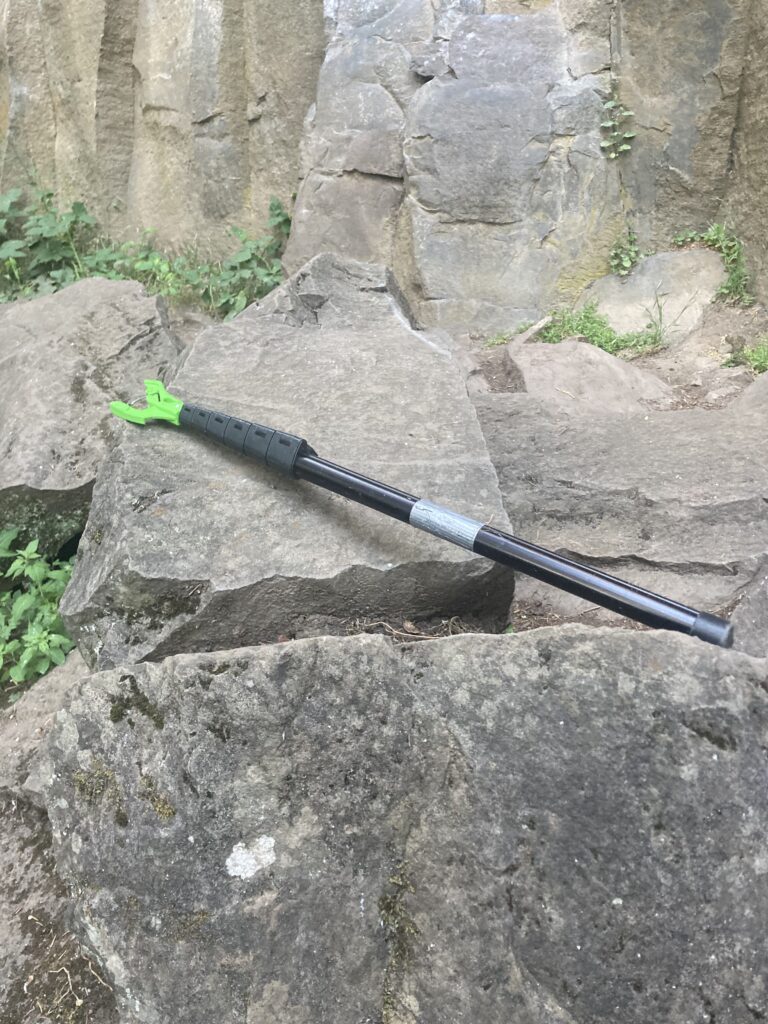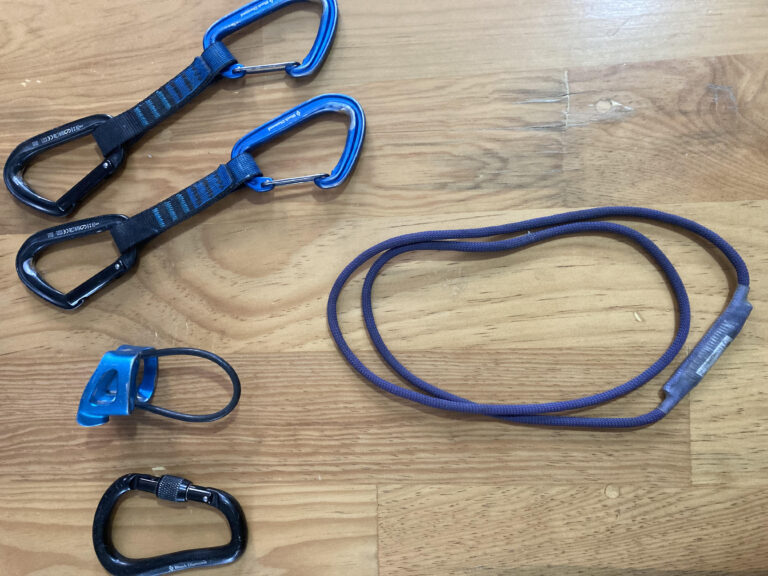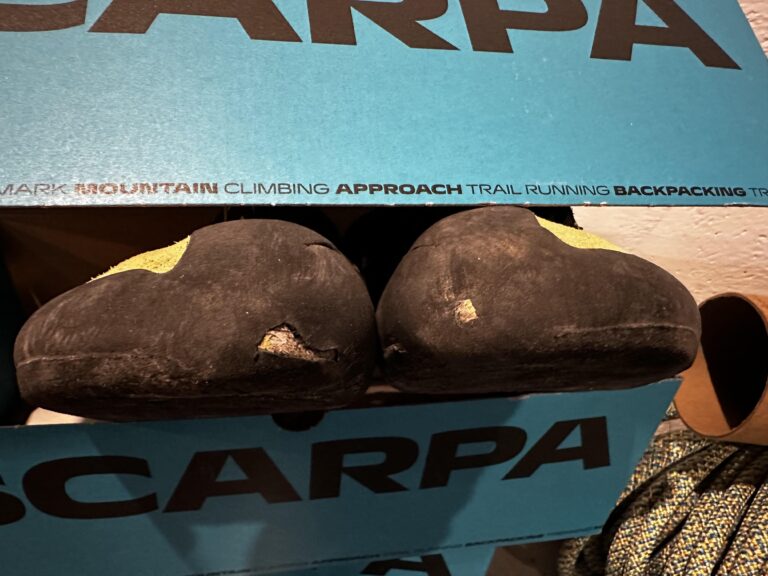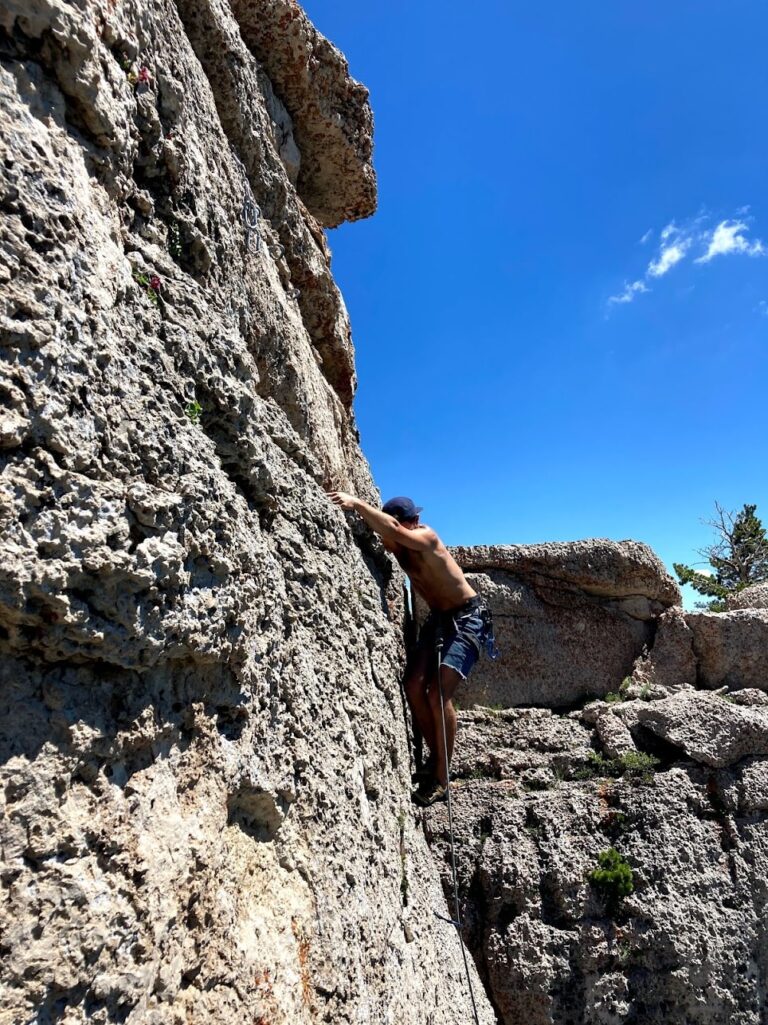How to Belay with a GRIGRI: A Guide to Safer Belays in 2024
Last Updated on: 23rd January 2024, 01:35 pm
I met a guy at a wedding last summer that mentioned he was a climber. After some idle chit-chat about our favorite crags and such, he casually mentioned that he broke his back climbing gym. Yup, you read that right. I wasn’t quite sure if I should ask for details but he offered them up. And the thing that stuck out was his partner was using an ATC. As a risk adversed climber myself, I prefer all my belayers know how to belay with a Grigri.
Wondering what went down? Well it’s not too hard to guess. As this guy topped out on the highest wall in the gym, he clipped the anchors and let go of the wall to relieve his pump and bask in the glory of his send. Unfortunately he was climbing with an inexperienced friend that had got lazy with their break hand and lost control of the rope resulting in a 40 foot tumble.
While this could of been prevented with better technique, it also could of been made (basically) impossible by using a Grigri. There’s a reason these devices are so popular — they’re the safest way to belay. If you’re debating on adding one of these to your climbing gear list getting one or not sure how they work, you’ve come to the right place.
What is a GRIGRI?
A GRIGRI is an assisted-braking belay device that has become a staple in the climbing community. It’s designed to enhance safety by providing an extra layer of protection when belaying a climber. Whether you’re a beginner or an experienced climber, understanding how to use a GRIGRI properly can greatly reduce the risk of accidents and add peace of mind while you’re out craggin’.
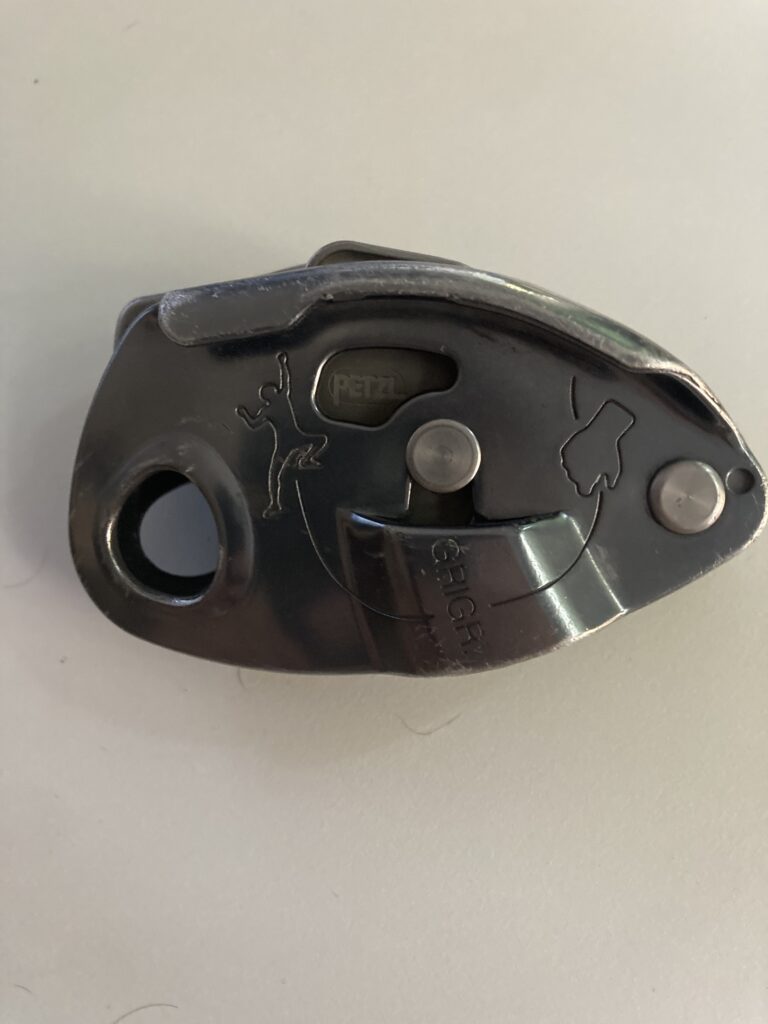
The GRIGRI is manufactured by Petzl. Unlike other belay devices like the ATC, the GRIGRI is intellectual property that can’t be replicated by other climbing brands. With that said, there are some other versions out there that do basically the same thing.
The GRIGRI is probably the safest way to protect your climber. The second best thing you can do is stick clip the first bolt of climbs to prevent ground falls before a climber is on-belay. If you have these two pieces of equipment and use proper technique while belaying, you’re setting yourself up for safe and successful sends.
How does a GRIGRI work
The GRIGRI acts as a dynamic brake, automatically engaging in the event of a fall or sudden force. The camming mechanism inside the GRIGRI pinches the rope, creating friction and preventing it from slipping through the device, thus providing a reliable catch.
One of the advantages of the GRIGRI is its ability to catch falls with minimal effort from the belayer. This makes it particularly beneficial in situations where there may be a significant weight difference between the climber and the belayer. The assisted-braking system of the GRIGRI can help compensate for a lighter belayer, reducing the risk of the climber being dropped due to a lack of braking force.
How to set up a GRIGRI to belay
Successfully using a GRIGRI starts with setting it up properly. It’s fairly easy, but has devastating consequences if done wrong. A climber at my gym recently took a 30 foot+ ground fall because the GRIGRI was set up backwards — not what you want.
To set up a GRIGRI, identify the climber side and the breaking side. The climber side will have a little image of a climber — the piece of rope going out of that end should be the side of the rope your climber is tied into. The other side has an image of a hand holding a rope — the piece of rope going out that side is for the break hand and should be the side where the rest of the rope is coiled and that your stopper knot is tied on.
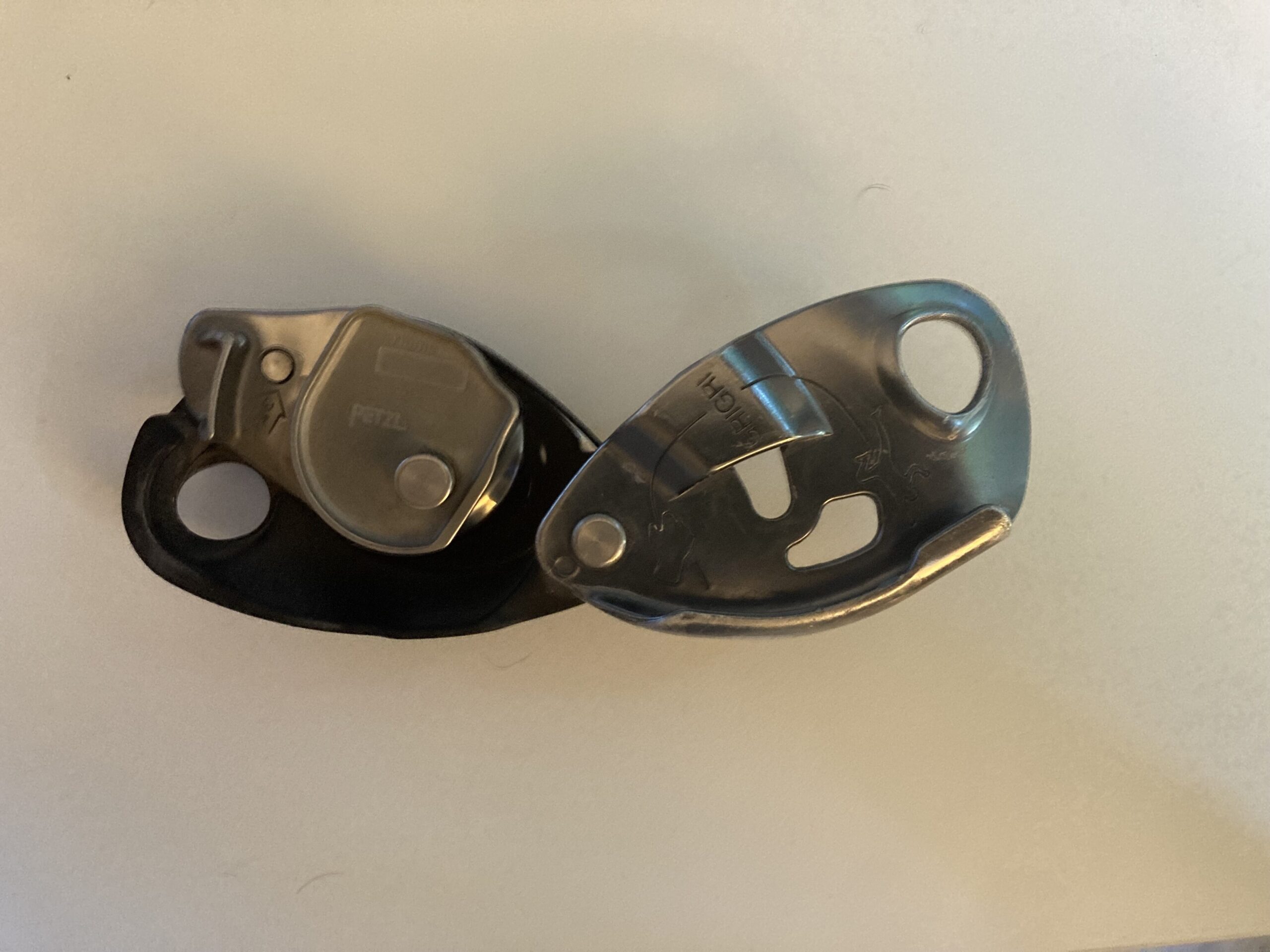
Make sure to use a locking carabiner to fasten the GRIGRI to your belay loop and make sure it’s actually locked.
How to belay with a GRIGRI in climbing
Belaying with a GRIGRI is a little tricky, but with some practice becomes second-nature. As always, start by confirming the rope is set up correctly. Like any other belay device, make sure you keep one hand on the end of the rope your climber isn’t on (your break hand).
Even though GRIGRI’s auto-lock, they are no substitution for proper belaying technique and attentiveness. As your climber ascends, you’ll feed out slack with your non-brake hand that should be positioned on the climbers side of the rope.
If your climber takes a fall, move the hand on the climber side of the rope to the side your break hand is on, and bring the rope down firmly to assist with breaking. The general technique doesn’t vary much from using an ATC.
Once your climber reaches the top of the route, pull the lever on the left side of the GRIGRI backwards in order to lower them. Remember to do it slowly until you get comfortable withe how fast the lowering mechanism works. Keep in mind that angles of climbs and the weight of your climber will change the speed. It’s always good to start slow so you don’t send your partner down on the express elevator. Part of knowing how to belay is knowing how to lower, so make sure you get it down!
GRIGRI vs. ATC
I bet you don’t think I have anything bad to say about the GRIGRI — we[ll you’re half-right. As far as tools for belaying sport and trad climbers on single pitch routes, I think it’s the best tool out there hands down. With that said, the ATC is more versatile and has other uses beyond just belaying.
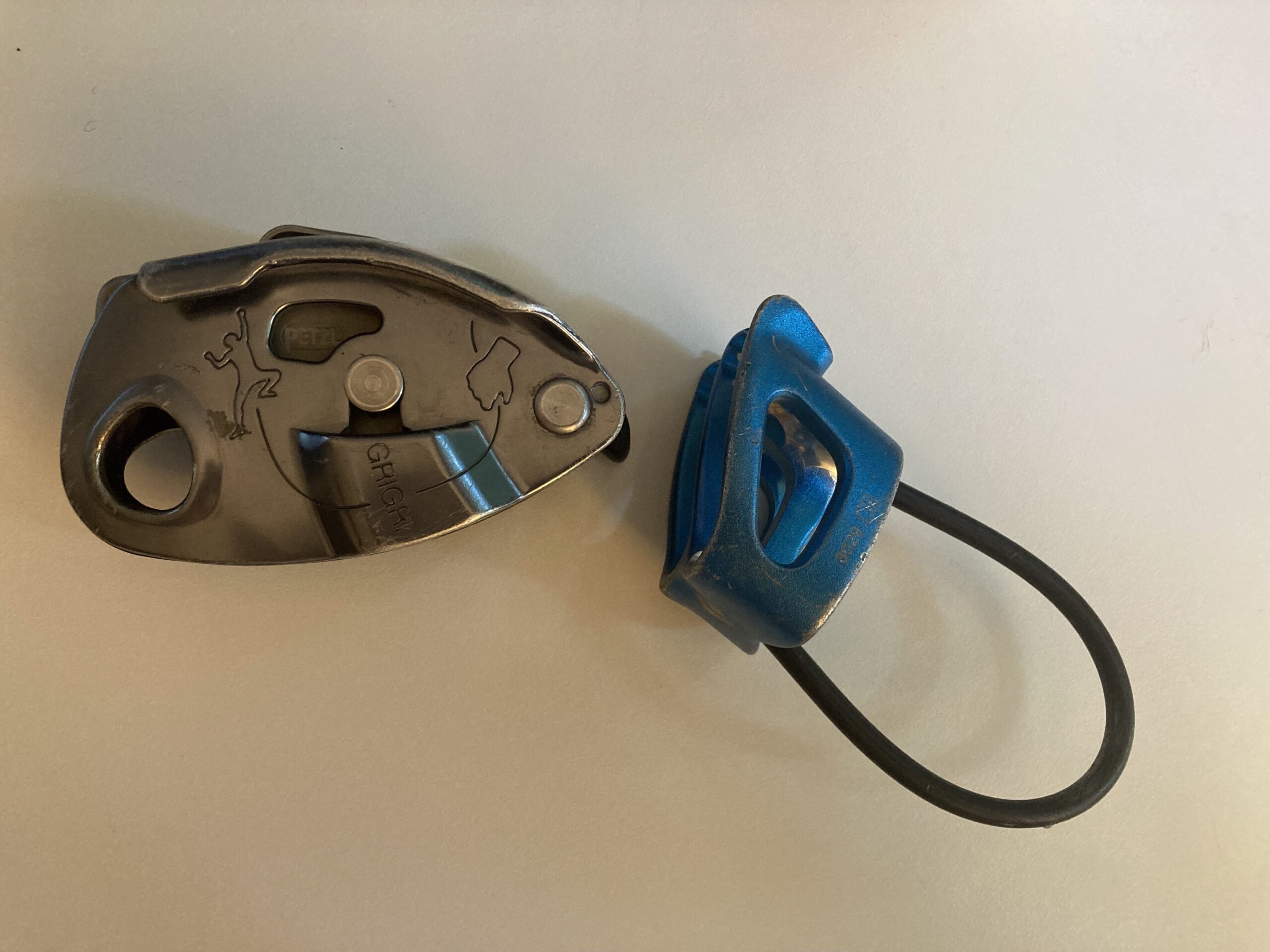
ATCs are the go-to tool for repelling. While you can simul-rapelling using two GRIGRIs, it’s an advanced technique that can be dangerous if you do it wrong. An ATC on the other hand is the most common device to rappel with. Some people also say it’s easier to belay from above with an ATC while multi-pitching. There are also some people that believe an ATC is better belay for trad climbing, but it’s up for debate.
Both are great devices, but the GRIGRI is going to bring more peace of mind — especially when climbing with new belayers. Though it’s a good call to have an ATC on hand as well… and to know how to use it.
Wrap Up: How to belay with a GRIGRI
Ask any (smart) climber what the most important part of rock climbing is and you’re bound to get the same answer — safety. The grade you climb or the experiences the sport can facilitate don’t mean anything if you get hurt. Rock climbing comes with some inherit danger, but the sport can actually be really safe if you do it correctly.
As far as belay devices go the grigri is widely popular, and for good reason. While ATCs are cheaper, the Grigri is by far the safest way to belay. That’s because the Grigri auto-locks, meaning that it doesn’t rely on the belayer holding tension to stop the rope.
